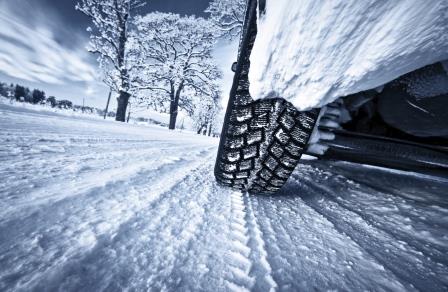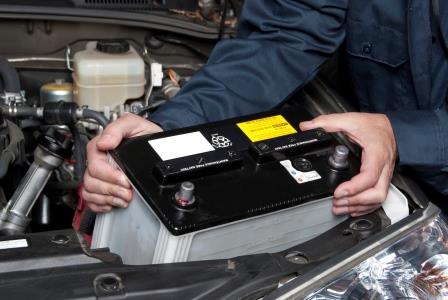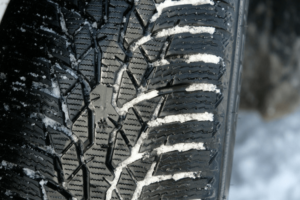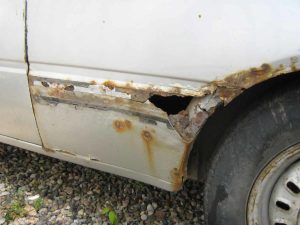5 Tips Before Driving a Classic Car In The Winter
 Winter can sometimes mean locking away a prized classic car and simply waiting for the sun to come out again. However, it doesn’t have to end planned trips entirely, as long as the weather isn’t consistently icy. It is important to avoid especially harsh conditions, as well as dangerous ice and damaging salt on the roads. Classic cars are made to be driven, and they benefit in many ways from being brought out regularly. Taking the car out on a jaunt prevents small critters from nesting within and disrupting components of the engine or leaving chewed holes in the upholstery. These drives can also be a good way to make sure that the car is operating as desired, and it will help owners determine if additional maintenance may be needed later. During the winter, driving can be difficult, but by following a few simple tips, it can be easy for owners to enjoy their drive without causing unwanted damage to the vehicle.
Winter can sometimes mean locking away a prized classic car and simply waiting for the sun to come out again. However, it doesn’t have to end planned trips entirely, as long as the weather isn’t consistently icy. It is important to avoid especially harsh conditions, as well as dangerous ice and damaging salt on the roads. Classic cars are made to be driven, and they benefit in many ways from being brought out regularly. Taking the car out on a jaunt prevents small critters from nesting within and disrupting components of the engine or leaving chewed holes in the upholstery. These drives can also be a good way to make sure that the car is operating as desired, and it will help owners determine if additional maintenance may be needed later. During the winter, driving can be difficult, but by following a few simple tips, it can be easy for owners to enjoy their drive without causing unwanted damage to the vehicle.
Replace Worn Seals and Check the Battery Before Heading Out
 Give every component of the vehicle a thorough check to make sure that every section is in good repair. Doing this before heading out during the winter can be one of the best ways to prevent further damage to the car. If there are any parts that need to be replaced or repaired, it is important to begin working there before taking the car out. The last thing that a driver wants is to find themselves stranded on the side of the road in freezing temperatures, so guaranteeing that the car’s condition is optimal beforehand helps avoid such a fate. In addition to the mechanical components of the vehicle, it is a good idea to check out the battery and make sure that it is full of charge. If the battery has already been recharged, then the cold air can be particularly harmful, and it will leave owners in need of a jump. In order to avoid this problem, simply set the car with a fresh battery for the coming winter months.
Give every component of the vehicle a thorough check to make sure that every section is in good repair. Doing this before heading out during the winter can be one of the best ways to prevent further damage to the car. If there are any parts that need to be replaced or repaired, it is important to begin working there before taking the car out. The last thing that a driver wants is to find themselves stranded on the side of the road in freezing temperatures, so guaranteeing that the car’s condition is optimal beforehand helps avoid such a fate. In addition to the mechanical components of the vehicle, it is a good idea to check out the battery and make sure that it is full of charge. If the battery has already been recharged, then the cold air can be particularly harmful, and it will leave owners in need of a jump. In order to avoid this problem, simply set the car with a fresh battery for the coming winter months.
Use Tires with a Strong Tread and Winter Capabilities
 This is one of the most crucial steps to avoid potential accidents and damage to vehicles when out on the road. Even classic cars can be successfully outfitted with snow tires, and while drivers will want to take their vehicles out on days where there is no ice on the ground, it is important to avoid being caught unaware by a dangerous hidden patch. Drivers should make sure that the tires are not looking flat or worn. They should also be replaced if they are too old. Like any other material, rubber degrades over time, so drivers should check the date the set was purchased, and if they are over five years old, individuals should get them checked for quality. The safest option is to always replace the tires right away. Tread separation is dangerous any time of the year, but for the winter especially, drivers should be sure to get tires that are designed to grip in icy conditions to avoid loss of control.
This is one of the most crucial steps to avoid potential accidents and damage to vehicles when out on the road. Even classic cars can be successfully outfitted with snow tires, and while drivers will want to take their vehicles out on days where there is no ice on the ground, it is important to avoid being caught unaware by a dangerous hidden patch. Drivers should make sure that the tires are not looking flat or worn. They should also be replaced if they are too old. Like any other material, rubber degrades over time, so drivers should check the date the set was purchased, and if they are over five years old, individuals should get them checked for quality. The safest option is to always replace the tires right away. Tread separation is dangerous any time of the year, but for the winter especially, drivers should be sure to get tires that are designed to grip in icy conditions to avoid loss of control.
Spray the Car Down with Corrosion Protection
 Using a spray designed to prevent corrosion is particularly good protection against the risk of elemental exposure. The presence of moisture in the air can result in a variety of problems for the vehicle, especially if owners have never taken their car out during the winter before. A spray will help reduce the buildup of rust and reduce the appearance of deterioration on the vehicle. There are numerous options for this spray, and they are all designed to work well. A solvent-free preventative and lubricant made with lanolin is one of the most popular options. One generous coating at the start of the colder season will last through the winter as long as users ensure the car’s overall cleanliness between rides. This chemical protection bars oxygen molecules from bonding with the vehicle’s metallic components, securing it against rusting without interfering with normal operations of the engine. As a bonus, many of the anti-corrosive sprays available will also protect paints and plastics, improving the overall lifespan of the classic car while making it easier for drivers to bring their vehicles to a car show during the winter.
Using a spray designed to prevent corrosion is particularly good protection against the risk of elemental exposure. The presence of moisture in the air can result in a variety of problems for the vehicle, especially if owners have never taken their car out during the winter before. A spray will help reduce the buildup of rust and reduce the appearance of deterioration on the vehicle. There are numerous options for this spray, and they are all designed to work well. A solvent-free preventative and lubricant made with lanolin is one of the most popular options. One generous coating at the start of the colder season will last through the winter as long as users ensure the car’s overall cleanliness between rides. This chemical protection bars oxygen molecules from bonding with the vehicle’s metallic components, securing it against rusting without interfering with normal operations of the engine. As a bonus, many of the anti-corrosive sprays available will also protect paints and plastics, improving the overall lifespan of the classic car while making it easier for drivers to bring their vehicles to a car show during the winter.
Drive at Slow Speeds at First to Warm the Car Up
When the car is ready for driving, it is important for owners to take their time and avoid overexerting their vehicle. When users start slow, it gives the classic car a chance to really warm up and get the oil circulating. The slow warmth also allows the vehicle to burn off any condensation left behind by the cold air. If drivers do not run the engine long enough during their trips, then the sludge can build up within, and that would cause the vehicle to run less smoothly or even leave lasting damage on delicate parts. Idling alone will not cut it either, so drivers should be sure to begin at slow speeds to get everything heated evenly. By the time the heater is beginning to breathe warm air, the car will be ready to go up to highway speeds. This process usually does not take longer than 15 minutes, and it can be fun to slowly and steadily accelerate during the drive.
Set Up to Clean the Car After a Trip
Even though drivers should always be looking for the driest winter days to take their vehicle out, there is no reason to risk corrosion damage from persistent puddles or muddy snowbanks piled beside roads. Owners should be sure to prepare ahead of time to rinse the dirt away, especially on the undercarriage, as this will help protect the car during drives. With a five-gallon bucket or two and a mitt loaded with soap, drivers can manually clean off most of the road’s grime very easily. The cleaning process involves individuals wiping down the wheel wells and the engine bay as well. A quick spray along the undercarriage will loosen and free any particles that could otherwise create rusted spots. Ideally, the driver will want to rinse the car inside the garage to prevent even clean water from turning into ice over the vehicle. If drivers do not have space on their own property to perform the wash, they can simply find a car wash nearby, which will provide many of the same services at an affordable premium.
All drivers should remember to check up on their classic cars regularly when the road becomes too rough for driving. Just as importantly, the best way to avoid potential damage to the vehicle is to take it out when the weather is not particularly difficult to drive in. Driving on cold and clear days will allow individuals to enjoy the winter months even more, especially behind the wheel of an attractive classic car. Taking the car out for a fun ride in those fortuitous times is also a good way to prepare it for another few weeks, where drivers can repeat the process every so often until spring arrives. If owners are not sure what products will work best with their vehicle, it can be a good idea to consult the owner’s manual.





Hi, thank you for sharing this. Such as helpful tips especially this season. I’d like to know if I followed all these tips but I put a car in a long parking (in the car garage) like a week or so. If using it again after that long week, do I have to follow these tips again or the car is still a good to go? All the best!
Skipping a car service or oil change could have adverse impacts…
So, a person should be aware of the basic car care tricks required to keep a car in working order.
Different types of fluids used in the car should be inspected regularly and degraded lubricants should be replaced.
A car needs special attention during the winter months.
Suitable precautionary measures should be taken into consideration to keep the vehicle in working order.